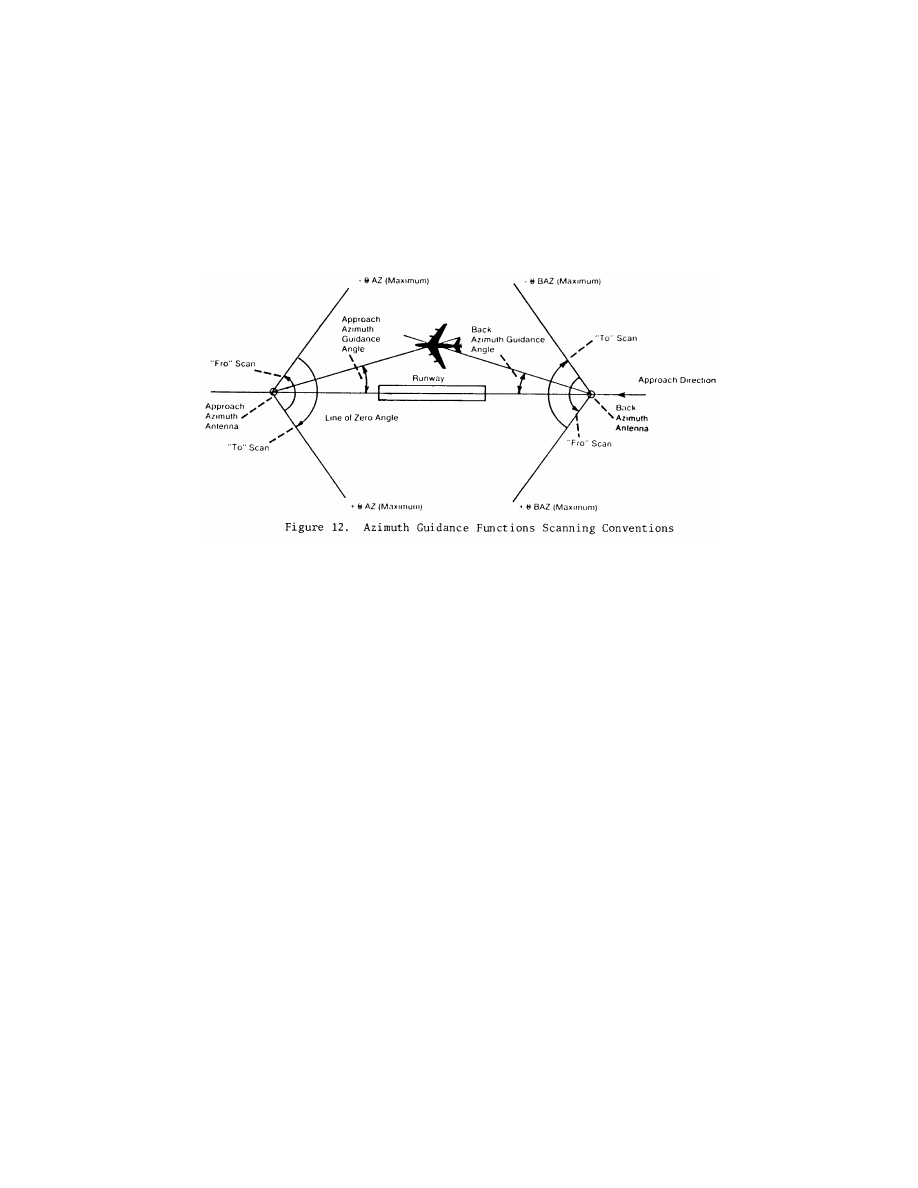
874
14 CFR Ch. I (1–1–19 Edition)
§ 171.315
(m)
False guidance.
False courses
which can be acquired and tracked by
an aircraft shall not exist anywhere ei-
ther inside or outside of the MLS cov-
erage sector. False courses which exist
outside of the minimum coverage sec-
tor may be suppressed by the use of
OCI.
N
OTE
: False courses may be due to (but not
limited to) MLS airborne receiver acquisi-
tion of the following types of false guidance:
reflections of the scanning beam, scanning
beam antenna sidelobes and grating lobes,
and incorrect clearance.
§ 171.315
Azimuth monitor system re-
quirements.
(a) The approach azimuth or back
azimuth monitor system must cause
the radiation to cease and a warning
must be provided at the designated
control point if any of the following
conditions persist for longer than the
periods specified:
(1) There is a change in the ground
equipment contribution to the mean
course error component such that the
path following error at the reference
datum or in the direction of any azi-
muth radial, exceeds the limits speci-
fied in §§ 171.313(e)(1) or 171.313(j) for a
period of more than one second.
N
OTE
: The above requirement and the re-
quirement to limit the ground equipment
mean error to
±
10 ft. can be satisfied by the
following procedure. The integral monitor
alarm limit should be set to the angular
equivalent of
±
10 ft. at the approach ref-
erence datum. This will limit the electrical
component of the mean course error to
±
10
ft. The field monitor alarm limit should be
set such that with the mean course error at
the alarm limit the total allowed PFE is not
exceeded on any commissioned approach
course from the limit of coverage to an alti-
tude of 100 feet.
(2) There are errors in two consecu-
tive transmissions of Basic Data Words
1, 2, 4 or 5.
(3) There is a reduction in the radi-
ated power to a level not less than that
specified in §§ 171.313(a)(4) or
171.313(g)(4) for a period of more than
one second.
(4) There is an error in the preamble
DPSK transmissions which occurs
more than once in any one second pe-
riod.
(5) There is an error in the time divi-
sion multiplex synchronization of a
particular azimuth function that the
requirement specified in § 171.311(e) is
not satisfied and if this condition per-
sists for more than one second.
(6) A failure of the monitor is de-
tected.
(b) Radiation of the following
fuctions must cease and a warning pro-
vided at the designated control point if
there are errors in 2 consecutive trans-
missions:
(1) Morse Code Identification,
(2) Basic Data Words 3 and 6,
(3) Auxiliary Data Words.
VerDate Sep<11>2014
08:20 May 17, 2019
Jkt 247048
PO 00000
Frm 00884
Fmt 8010
Sfmt 8010
Y:\SGML\247048.XXX
247048
EC15SE91.019</GPH>